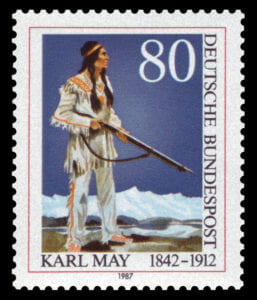by Irelyn Mulvaney*
During my last six months in Berlin, there have been a lot of new and exciting cultural information and norms that I have become adjusted to.
Everything shuts down on Sundays, going to Biergartens after work with colleagues on a Tuesday is normal, clubs are open 72 hours, club mate will get you through exam season, doner is your new 2 am meal, and do not jaywalk in front of children unless you want to be screamed at by a woman on her bike. On that note, try to avoid stepping in the bike lanes; the only indicator I’ve been able to pick up on is a darker cobblestone, which means that you’ve crossed into biking territory. Once you’re in that lane, you must accept the consequences- which means you will probably be yelled at.
So yeah, I have learned a lot of new information and adjusted my life accordingly. Don’t get me wrong, I love to go thrifting at flea markets or rollerskating (this is a fiction of my imagination, I have the grace of an elephant) at Tempelhof.
Some things have been more challenging for me to adjust to, things nobody told me about.
That’s not entirely true. My German Elementary 1 teacher indirectly warned me back in New York City. I didn’t think much of it then, just a passing thought of ‘hmm…well, that’s weird.’ that was it. He told us that some Germans, particularly those of an older generation, are fascinated with Native Americans. As a tribal member of the Choctaw Nation, I am very proud of where I come from. In the United States, I am used to the oppression and bloody history between native tribal communities and the government. However, in Germany, I didn’t expect what I found.
So what did I discover during my six months here? That Germany not only has an entirely stereotyped representation of what a Native person is supposed to look like but there is a prevalence of this stereotype in media, which has many repercussions in daily life. Not only is there a complete misrepresentation of Indigenous culture in mainstream media, but this has trickled down into the fabric of social society itself, with a fetishization of Native people. It happened to me for the first time at a social gathering. I was talking to a man who asked me where I was from. I answered, saying my hometown, but he wanted to know where my parents were from. The second he learned that I was Native, I saw his eyes get wide. The next thing I knew, I was being peppered with endless questions about if I eat rattlesnake tails and what it’s like to live in a teepee. Both are highly stereotypical assumptions that have harmful implications for Native people.
I am so grateful for all the memories I have had the chance to make and the amazing people that I met during my time at NYU Berlin.
After that exhausting encounter, I began to notice it more and more in the films I watched where non-Native actors would ride in on horses wearing brown/red paint and pretending to be
Native, statues of caricatures that say CHIEF in big red letters on the sidewalk, street art full of stereotypes, an ‘Indian’ hobby club for Germans to join and pretend to be native, and even at soccer games the people in the stands sometimes wear headdresses.
 Needless to say, it wasn’t something I could adjust to. But it did make me extremely curious as to why? I know Germany has its fair share of problems, but I never thought that appropriation and stereotypes of Native people and culture would be on the list. In my mind, the struggles of my Native ancestors and the German people were very far removed from each other, so where did this fascination and misrepresentation of my community come from?
Needless to say, it wasn’t something I could adjust to. But it did make me extremely curious as to why? I know Germany has its fair share of problems, but I never thought that appropriation and stereotypes of Native people and culture would be on the list. In my mind, the struggles of my Native ancestors and the German people were very far removed from each other, so where did this fascination and misrepresentation of my community come from?
The stamp shows “Winnetou” – a fictional depiction of a Native American and a favorite character of the German childrens book series by Karl May.
The answer to the above question and the bane to my existence comes from Winnetou. Winnetou is a character created by Karl May in the late 19th century and is the Native chief of the Apache tribe. Winnetou greatly perpetuated stereotypes of Native people and promoted the fetishization of Native Americans in German society. Funnily enough, the author and creator of this character, Karl May, had never stepped foot on Turtle Island or the United States when he was writing his novels. Not only had he never even visited our land, but he had never had contact with Native American culture during his writing process- I think you can see the problem here. His representation was based on biased and incorrect ethnographic studies, which only proved to portray Native people in an inauthentic light in a harmful, outdated, and untrue way. Unfortunately, the widespread popularity of both the films (and yes, the movie adaptations, which were all played by non-Native actors who put feathers in their hair and pretended to be a different race) created a noteworthy subculture in Germany,
“Indianismus” or “Native American hobbyism” are the names of this subculture.
These subcultures involve:
➢ Dressing up like a “Native American” using stereotyped fringed jackets, headdresses, etc. ➢ Organizing “powwows”
➢ Making “dreamcatchers” and “feather crafting”
➢ Performing “Native dances”
➢ Engaging in other “activities” related to “Native American cultures”.
There is a reason that I am using quotes. There is no way to dress up as a Native. You cannot dress up as a race. You’re only dressing up as an offensive stereotype. The “powwows” being organized are nothing like what actual powwows are like. There are over 500 tribes on Turtle Island, each with its own culture, distinction, traditions, etc. You cannot generalize all Native people into one group, we all have different tribal citizenships, and our tribal sovereignty is essential to our identity and kinship systems.
This subculture does not represent us. It is a fascination that can quickly be reclassified as fetishization. Fetishization refers to objectifying people or a culture, reducing them to stereotypes or symbols for personal enjoyment. In the situation involving Winnetou and this Native
American subculture, we are being romanticized and simplified. Our diversity, complexity, historical, and ongoing struggles (sign save ICWA petitions if you haven’t already) are being totally overlooked and ignored by German people while they profit on this fictional idea of us from Wild West novels.
We are not “noble savages”. Our lives and existence has much more value than existing to be commodified.
Works Cited
Aldred, L. (2000). Plastic shamans and astroturf sun dances: New Age commercialization of Native American spirituality. American Indian Quarterly, 24(3), 329-352.
Michaels, J. (2012). fantasies of native americans: Karl May’s continuing impact on the German imagination. European Journal of American Culture, 31(3), 205-218.
Adams, C. F. (2019). Imagining” Indianer”: Karl May’s Winnetou and Germans’ Enduring Fantasies about Native Americans.
King, L. M. (2016). Revisiting Winnetou: The Karl May museum, cultural appropriation, and indigenous self-representation. Studies in American Indian Literatures, 28(2), 25-55.
Usbeck, F. (2015). Fellow tribesmen: The image of Native Americans, national identity, and Nazi ideology in Germany (Vol. 19). Berghahn Books.
 * Irelyn Mulvaney, is a tribal citizen of the Choctaw Nation and was born and raised in San Diego, California. She is planning to graduate with a bachelor degree and a major in Psychology with a minor in Native & Indigenous Studies. She has been in Berlin for almost seven months as a spring and summer study abroad student.
* Irelyn Mulvaney, is a tribal citizen of the Choctaw Nation and was born and raised in San Diego, California. She is planning to graduate with a bachelor degree and a major in Psychology with a minor in Native & Indigenous Studies. She has been in Berlin for almost seven months as a spring and summer study abroad student.